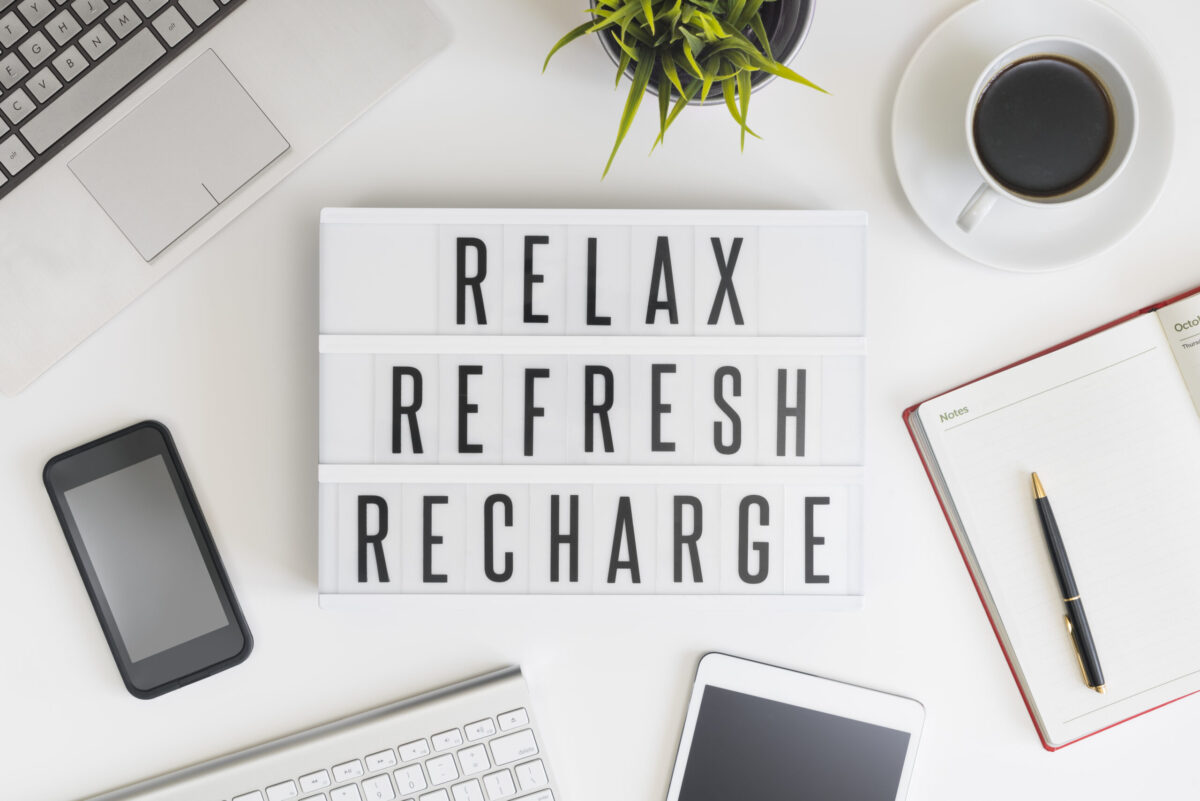If you’re the kind of person who works throughout the day to get more done, you may be doing more harm than good. Research shows that taking breaks actually improves productivity.
WellTuned spoke with Melissa Guinn, an organizational and learning consultant with BlueCross BlueShield of Tennessee, to find out why some are hesitant to take breaks and how to take them productively to improve your well-being.
Why some people are hesitant to take breaks
Melissa Guinn: Some people don’t take breaks because they think their bosses will frown on it. Some feel like they have too much work to stop and take a break. They get caught up in the momentum of being busy. For others, it’s a matter of finding an “appropriate” time in the day.
Taking breaks may be easier for people who work in an office. When you work from home, it may be more challenging to find the same kind of prompts that you’d have in a regular workplace. You don’t have a break room, and you aren’t going to see your coworker getting up from their desk and going for coffee. You have to create boundaries yourself, because they don’t already exist.
How to take a productive break
Melissa Guinn: We may forget how important breaks are, but we can benefit a great deal from taking them. Everything we believe is important for our work, as well as our interactions with our families and loved ones—requires us to take good care of ourselves, too. Taking a break lets you recharge and re-energize. Your brain needs breaks for it to be able to perform optimally. We can’t be present for others if we are completely exhausted—and that includes brain-tired, too.
Once you’re committed to breaks, it’s important to take the right kind of break to maximize the benefits. The actual type of break can vary from person to person. You may need to experiment to figure out what works best for you. Some breaks you might want to try:
- Walk outside
- Listen to music
- Meditate or a take quick power nap
- Call a friend who makes you feel good about yourself
- Take an online yoga session
- Ride a bike
- Walk your dog
Any kind of physical movement is helpful for refreshing your brain and improving your overall well-being.
To help your breaks stay on track, you can:
- Create a reminder on your calendar. This will help you keep track of your break times so you won’t forget.
- Remind yourself why breaks are important. Create a mantra that helps you focus on why you need to take this time for yourself. It could be something as simple as “I’m taking a rest so I can bring all my brainpower to the project I’m working on.” Write it down somewhere so you can see it.
- Be a positive voice for your coworkers. Lead by example by taking a break. Support them in taking breaks so you can encourage each other in building healthy habits.
WellTuned: How to talk about your emotions at work
Unproductive breaks to avoid
Melissa Guinn: Approaches to breaks will vary, based on a person’s interests, needs and workplace. However, it’s generally agreed that the most reinvigorating breaks do not include staring at a phone or computer screen. The least effective break activities include:
- Surfing the internet
- Scrolling through social media
- Reading and responding to emails
“Consuming social media is the most common break activity, but it can result in emotional exhaustion – the opposite of what you want to achieve through your break,” Melissa explains. “If we focus on taking breaks that refresh and rejuvenate us, we will be better able to be our best when we return work.”
WellTuned: 10 ways to be mindful at work
Get more information about specific health terms, topics and conditions to better manage your health on bcbst.com. BlueCross BlueShield of Tennessee members can access wellness-related discounts on fitness products, gym memberships, healthy eating and more through Blue365®. BCBST members can also find tools and resources to help improve health and well-being by logging into BlueAccess and going to the Managing Your Health tab.





